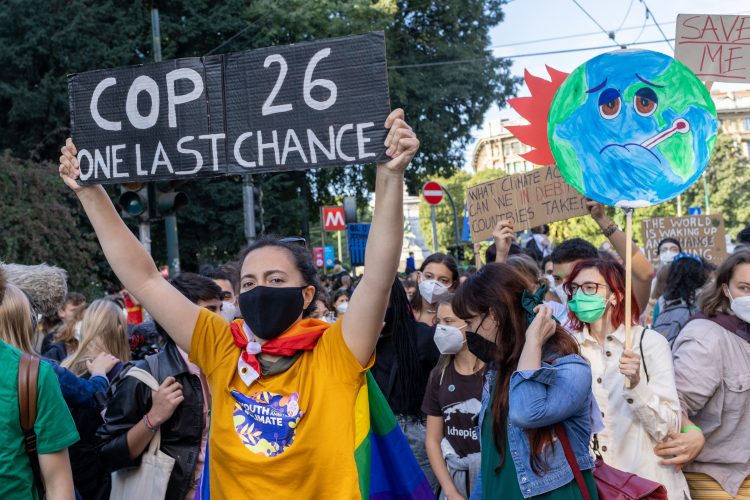Using inclusive systems innovation to build a future-fit food system
- Like
- Digg
- Del
- Tumblr
- VKontakte
- Buffer
- Love This
- Odnoklassniki
- Meneame
- Blogger
- Amazon
- Yahoo Mail
- Gmail
- AOL
- Newsvine
- HackerNews
- Evernote
- MySpace
- Mail.ru
- Viadeo
- Line
- Comments
- Yummly
- SMS
- Viber
- Telegram
- Subscribe
- Skype
- Facebook Messenger
- Kakao
- LiveJournal
- Yammer
- Edgar
- Fintel
- Mix
- Instapaper
- Copy Link
Posted: 29 November 2021 | Dr. Andy Zynga | No comments yet
Dr. Andy Zynga, CEO of EIT Food, outlines the progress that needs to be made if we are to innovate and build a food system fit for whatever the future holds.


COP26 reminded the food industry that the clock is ticking
Our food system is at a pivotal moment. The interconnected nature of the global climate and health crises has never been clearer, and our approach to innovation and change must reflect this. Dialogues at COP26 and the first United Nations Food Systems Summit (UNFSS) reminded us that the clock is ticking, and that the time for collaborative action is now.
In order to understand these huge, interconnected challenges and create the solutions needed to tackle them, we need to start doing things differently, and doing things better. Inclusive systems innovation provides us with the structures and opportunities to enable everyone to become involved with, and benefit from, innovation. This is essential to build a strong food system for us all. As stakeholders within the agri-food sector, it is becoming increasingly evident that the decisions we make today will not only impact the future of our food system, but the health of our people and planet too. We can no longer consider food system challenges in isolation. This has to involve collaboration between every part of the food system, and we need to develop ways in which all voices can be heard.
From business size and financial capacity to diversity among workers, skills and perspectives; inclusive systems innovation provides us with a better picture of the challenges faced at all levels and enables development of the solutions needed to achieve greater impact for more people.
Leveraging momentum to drive change
COP26 was always going to be tough, with a lot of pressure on formal negotiations and a lot on the agenda. However, despite commitments such as a pledge from 45 nations to protect nature with sustainable farming being announced, discussions about our food system as a major challenge and as a solution did not feature enough. We need to do better.
Speaking at COP26, the Special Envoy for UNFSS, Dr. Agnes Kalibata, said, “the intersection between climate and food is profound – if we do not address food systems-driven climate emissions, we simply cannot make our 1.5°C target; and if we don’t, food systems will suffer the most.”
Dr. Kalibata continued to note that we must already be looking forward to COP27 where food should be central to all conversations and negotiations.


Food should play a central role at COP27, due to be held in Sharm El-Sheikh
With this in mind, and as we reflect on the impacts of the pandemic, we must all continue to come together. This is not limited to partnerships between member states; civil society has a huge role to play in driving food system action. 2021 has left us with a unique opportunity to drive and accelerate change together, and pressure on world leaders and food system stakeholders at COP26 and UNFSS has ignited a fire of global activism as we look forward; people are ready for change, and innovation must be made accessible to everyone to help foster that change.
The pandemic resulted in fewer resources being available, making it especially important that we shared and collaborated. We learnt that by pooling resources, avoiding duplication of efforts, and sharing and establishing best practices in collaborative partnerships, we could achieve greater impact more effectively. It showed us the potential for a new path, and that in times of need, innovation can help us to find a better way forward.
Innovating for the future, together
What’s more, involving consumers and providing them with access to the innovation process means solutions can be both better tailored to their needs but also more widely understood and accepted. The voices of underrepresented groups, such as women, young people and traditional or indigenous communities, must also be embedded within the innovation process. This means an even greater breadth of knowledge, expertise and innovation can be reached, whilst working towards the achievement of the UN Sustainable Development Goals (SDGs) such as gender equity (Goal 5) and reduced inequalities (Goal 10).
This extends to ensuring all actors of the food system are connected and help to drive the dialogues leading up to the 2030 deadline for the SDGs, and beyond. This includes industry and citizens, as much as civil society and champions, so that change comes from the ground up and works for all.
We must move beyond the concept of a linear food chain, to one of a sustainable circular food economy, providing opportunities rather than negative contributions. As I shared at the Global Innovation Hub Pavilion at COP26, we are part of a global network and our approach to innovation should reflect this.
About the author
Dr. Andy Zynga is the CEO of EIT Food, the world’s largest food innovation community working to build a future-fit food system that produces healthy and sustainable food for all. Based in Leuven, Andy has international experience in food systems, innovation, telecoms and technology services and a proven track record in building profitable businesses in the USA and Europe.
Related topics
Food Safety, Health & Nutrition, Regulation & Legislation, Research & development, Supply chain, Sustainability
Related organisations
EIT Food, United Nations (UN), United Nations Food Systems Summit (UNFSS)







